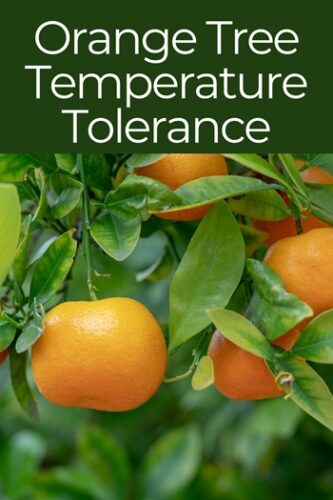We all love orange juice. Either for breakfast or when taking a snack, orange juice is preferred by many people all day.
However much we love orange juice, there is very little knowledge on how to grow the citrus tree that produces the juice, the conditions needed for its growth, and whatnot.
Most farmers grow citrus trees on a large scale, but this doesn’t mean that one can’t have a tiny garden of citrus trees because they do pretty well, even on a small scale.
There are a variety of citrus trees, all with different requirements. Much like any other farming business, it is important to fully know about citrus trees beforehand when you are looking to plant them.
This article gives an insight into some of the information that one needs to know about citrus trees.

Orange Tree Temperature Tolerance
What are citrus trees?
Citrus trees, much like many trees, are fruit trees with citrus as their fruit. These trees are from the genus Citrus.
They contain edible juice fruits. There are different types of citrus fruits, like lemons, grapefruits, oranges, etcetera.
Citrus trees require good drainage, and so they do well in places with sandy loam soil. Farmers with clay-soil farms can also do citrus tree planting, but with proper irrigation.
Recognizing citrus trees is simple and can be done by looking at the fruits on the tree’s branches. In cases where there is no fruit on the tree, looking at the shape, foliage, and flower and smelling it since it mostly has a fragrance could be helpful.
Citrus trees are well-known for their many medical benefits, including keeping a healthy heart, among many other benefits.
What is the ideal temperature for citrus trees?
Citrus trees are outdoor plants. Ensuring that you plant your citrus tree in an ideal place in terms of temperature is essential for its growth.
Knowing the temperatures needed for citrus trees to thrive is vital when venturing into that kind of farming. For starters, citrus trees are tropical and semitropical plants. Many people opt to have indoor gardens for most of the agricultural plants they may be growing.
Take citrus trees, for example; some people choose to graft them to enable indoor planting. Indoor planting may work for some people; however, citrus trees have an outdoor restriction.
Grafting the trees to enable indoor planting can sometimes be helpful when the temperatures outside are harsh for the trees. Since citrus trees are tropical trees, a sunny and warm climate would be best to plant them.
Citrus tree temperatures of 55 degrees to 90 degrees Fahrenheit are ideal.
However, with this range, the trees do better on the higher side, meaning temperatures between 75 and 90 degrees are ideal during the summer and spring and 60 and 70 degrees for the winter and fall in places that experience such seasons.
What is the coldest temperature citrus trees can tolerate?
When looking at the tolerance of citrus trees to temperature, there are two aspects: the ground-level temperature and the temperatures around the canopy area.
Not all citrus trees are sensitive to cold temperatures the same. Some can do well even in less-than-ideal temperatures.
For instance, limes and lemons are more sensitive to cold temperatures compared to the other citrus trees. For such citrus trees, the cold tolerance lies in the high 20s, unlike sweet orange trees, whose tolerance lies in the mid-20s.
Other citrus trees, like tangerines, might go as low as 20 degrees Fahrenheit and survive with zero damage. Apart from the temperature, many other parameters determine the survival of citrus trees in the cold.
For instance, mature trees have a higher survival chance than younger trees; the healthiness of citrus trees depends on how healthy they were before the cold period; and lastly, the duration of the cold period.
Anything below 20 degrees Fahrenheit would damage the trees since that is the lowest temperature level for such trees to thrive.
At what temperature do citrus trees freeze?
Citrus trees vary in temperature tolerance. As much as they can survive in cold temperatures, there are periods of cold that can cause damage to the citrus trees, depending on the type of citrus tree.
A lemon and lime tree can tolerate up to 32 degrees Fahrenheit on the lower side and freeze when temperatures drop below that.
Other citrus trees, like Mandarin oranges, can only tolerate cold temperatures of up to 55 degrees Fahrenheit and 32 degrees if there is short exposure to such a period of cold.
In general, different citrus trees have different tolerance levels. On the general side, citrus trees freeze when temperatures hit below 26 to 28 degrees Fahrenheit.
Therefore, making sure that the temperatures for which you are to grow your citrus trees are ideal and that the kind of citrus tree you have is tolerant of that climate is essential to thriving in the citrus tree growing business.




